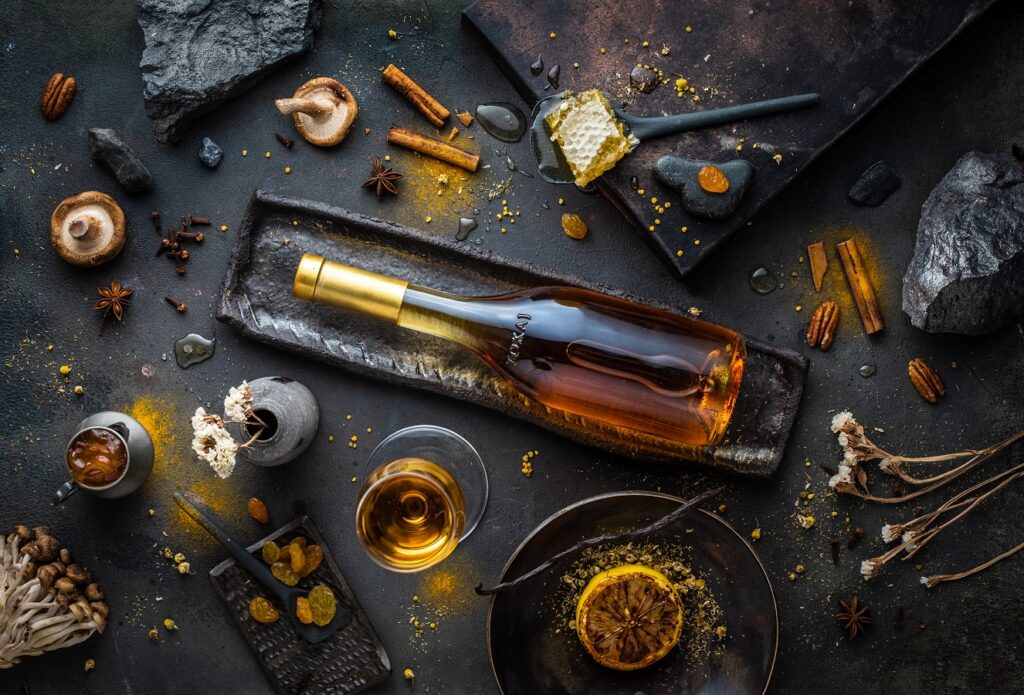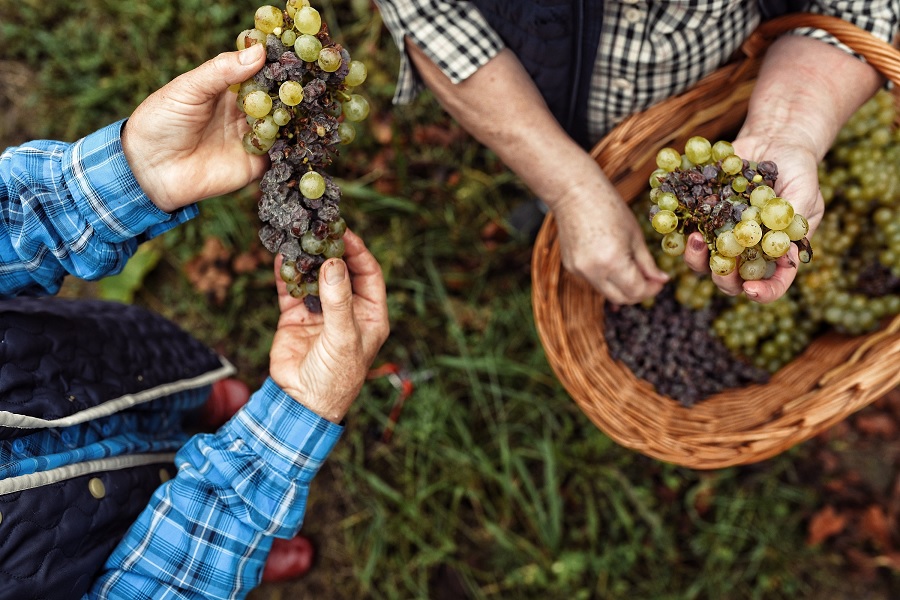Tokaji Aszú – Best Vintages to Store or Invest In
Hungarian wine has evolved significantly since the country regained its independence, with new varieties gaining attention every year. However, one product maintains a steady presence on store shelves and in collectors’ cellars: Tokaji Aszú. Though made in most vintages, not every one is of exceptional quality. Here’s a look at the best Tokaji Aszú vintages of the last 25 years.

Tokaji Aszú is a wine like no other, made from the perfect marriage of Tokaj’s volcanic soil,
ideal climate, and the Furmint and Hárslevelű grape varieties. The winemaking process begins with shriveled Aszú berries, macerated with must for up to 48 hours which determines the sweetness level. Fermented in stainless steel or oak, the wine is then aged for a minimum of 18 months in small Gönci barrels (136 L), requiring a total of three years of ageing before release. With at least 120g/L residual sugar – often surpassing 200g/L in the prized 6 puttonyos wines – Tokaji Aszú delivers a rich, balanced sweetness and low alcohol level. While the puttonyos number isn’t always listed, the wine’s prestige is unmistakable. Most commonly bottled in 0.5 liters, smaller sizes like 0.35 and 0.25 liters are also occasionally found.
Unique Product
Tokaj’s moderate climate, shaped by the Bodrog and Tisza rivers, creates perfect conditions for Botrytis cinerea (noble rot), essential for its renowned sweet wines. The region’s volcanic soil adds the high acidity needed to balance the rich sweetness, ensuring that Tokaji Aszú stays refreshing and never overpowering when skillfully made. While Tokaji Aszú has been produced for centuries, the modern classification was established in 2003. Though it’s made almost every year, not all vintages might be suited for long-term storage or investment. Let’s explore the best vintages from the past 25 years that are truly worth preserving or collecting.
Best Vintages to Look For
1999 is widely considered the best vintage in Tokaj ever, so if you come across a bottle, don’t
miss the chance to purchase. The 2000 and 2003 vintages were both incredibly hot, but the
autumn weather helped produce wines worth remembering. 2006 brought harmonious, well-balanced Aszús in terms of sweetness and acidity; 2007, another hot year, resulted in rounder, broader wines that still managed to retain their acidity; while 2008 offered the highest acidity and an intense botrytized character.

2013 is another standout vintage. These wines may still be found in specialized wine shops or
at the winemakers, and you might be lucky enough to get a bottle—or even a case—at a fair
price, thanks to the declining popularity of sweet wines and producers’ push for cash flow.
2016 is also worth buying, but the 2017 vintage stands out a bit more, in which even less well-known producers succeeded in making exceptional wines. 2019 is certainly a highlight
too, while some claim 2021 mirrors 1999, based on both climatic conditions and technical
characteristics. This is currently the latest release available on the market and might remain
so for a while, as 2022 was an extremely hot year in Tokaj, and after another rainy year in
2023, 2024 brought a different kind of challenge – drought – meaning that none of these
years were ideal for producing outstanding Aszú wines.
For those seeking guaranteed quality and probably older vintages, the Grand Tokaj Museum Collection can be also an option to consider. It features vintages 1940, 1947, 1949, 1956, 1963, 1964, 1968, 1972, 1975, 1983, and 1988. These wines have been recently reviewed and rebottled by a small committee, and can be purchased with confidence – also individually, if preferred.
Notable producers of premium-quality Aszú to look out for include Szepsy, Disznókő,
Oremus, Demeter Zoltán, Tokaj Nobilis, Tokaj Kikelet, and Barta. For a guaranteed standout, the 2019 Tokaji Aszú from Gizella Winery deserves special mention – it was selected as one of the Top 50 Wines by the Decanter World Wine Awards last year, likely the highest international recognition an Aszú has ever received. Even more impressively, it’s still available on the market. I had the chance to taste it earlier this year, and I can confidently say it’s truly exceptional – a benchmark in the world of sweet wines.
